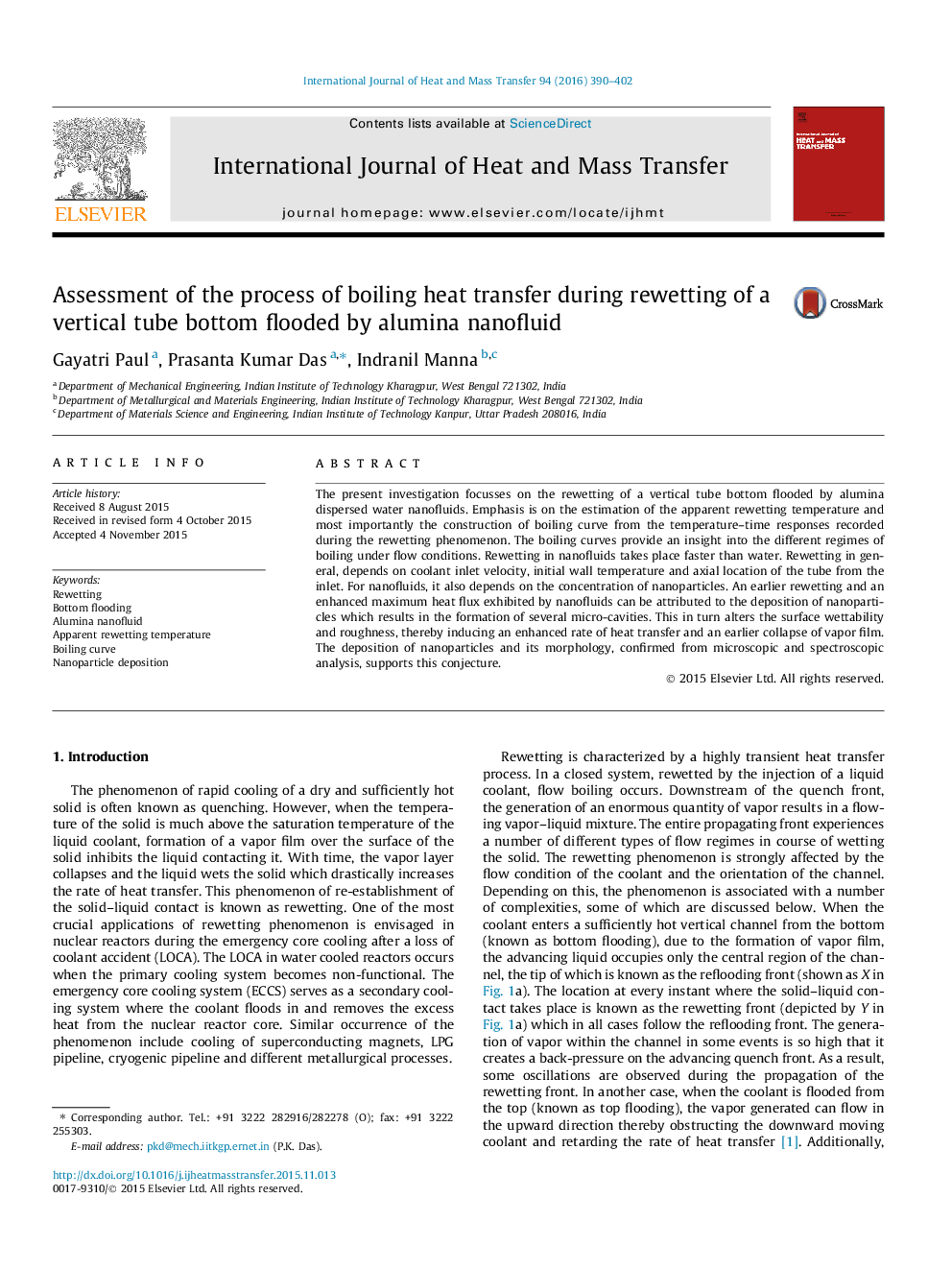| کد مقاله | کد نشریه | سال انتشار | مقاله انگلیسی | نسخه تمام متن |
|---|---|---|---|---|
| 7055999 | 1458048 | 2016 | 13 صفحه PDF | دانلود رایگان |
عنوان انگلیسی مقاله ISI
Assessment of the process of boiling heat transfer during rewetting of a vertical tube bottom flooded by alumina nanofluid
ترجمه فارسی عنوان
ارزیابی روند انتقال حرارت جوش در طی باز شدن یک لوله عمودی که توسط نانوفیلد آلومینا پر شده است
دانلود مقاله + سفارش ترجمه
دانلود مقاله ISI انگلیسی
رایگان برای ایرانیان
کلمات کلیدی
ریتینگ، پایین سیل، نانو فلوئید آلومینا، دمای واکنش ظاهری، منحنی جوش، رسوب نانوذرات،
ترجمه چکیده
تحقیقات حاضر بر روی باز شدن یک لوله لوله عمودی که توسط نانوفیلد های آب پراکنده آلومینا فرو ریخته می شود، تمرکز دارد. تاکید بر برآورد درجه حرارت باز ظاهری است و مهمتر از همه، ساخت منحنی جوش از پاسخ های دما و زمان ثبت شده در طول پدیده رولتینگ است. منحنی های جوش نشان دهنده ی رژیم های متفاوت جوش در شرایط جریان است. رطوبت در نانوسیم ها سریعتر از آب اتفاق می افتد. به طور کلی، بستگی به سرعت ورودی خنک کننده، درجه حرارت دیواره اولیه و محل محوری لوله از ورودی دارد. برای نانوفیلد ها نیز به غلظت نانوذرات بستگی دارد. یک مجذور زودتر و افزایش حداکثر جریان گرما که توسط نانوسیم ها نشان داده می شود، می تواند به رسوب نانوذرات مربوط شود که موجب تشکیل چندین حفره می شود. این به نوبه ی خود باعث می شود تا رطوبت و زبری سطح بهبود یابد و در نتیجه میزان افزایش انتقال حرارت و فروپاشی فاز بخار افزایش یابد. رسوب نانوذرات و مورفولوژی آن، که از تجزیه و تحلیل میکروسکوپی و اسپکتروسکوپی تایید شده است، از این حدس پشتیبانی می کند.
موضوعات مرتبط
مهندسی و علوم پایه
مهندسی شیمی
جریان سیال و فرایندهای انتقال
چکیده انگلیسی
The present investigation focusses on the rewetting of a vertical tube bottom flooded by alumina dispersed water nanofluids. Emphasis is on the estimation of the apparent rewetting temperature and most importantly the construction of boiling curve from the temperature-time responses recorded during the rewetting phenomenon. The boiling curves provide an insight into the different regimes of boiling under flow conditions. Rewetting in nanofluids takes place faster than water. Rewetting in general, depends on coolant inlet velocity, initial wall temperature and axial location of the tube from the inlet. For nanofluids, it also depends on the concentration of nanoparticles. An earlier rewetting and an enhanced maximum heat flux exhibited by nanofluids can be attributed to the deposition of nanoparticles which results in the formation of several micro-cavities. This in turn alters the surface wettability and roughness, thereby inducing an enhanced rate of heat transfer and an earlier collapse of vapor film. The deposition of nanoparticles and its morphology, confirmed from microscopic and spectroscopic analysis, supports this conjecture.
ناشر
Database: Elsevier - ScienceDirect (ساینس دایرکت)
Journal: International Journal of Heat and Mass Transfer - Volume 94, March 2016, Pages 390-402
Journal: International Journal of Heat and Mass Transfer - Volume 94, March 2016, Pages 390-402
نویسندگان
Gayatri Paul, Prasanta Kumar Das, Indranil Manna,
